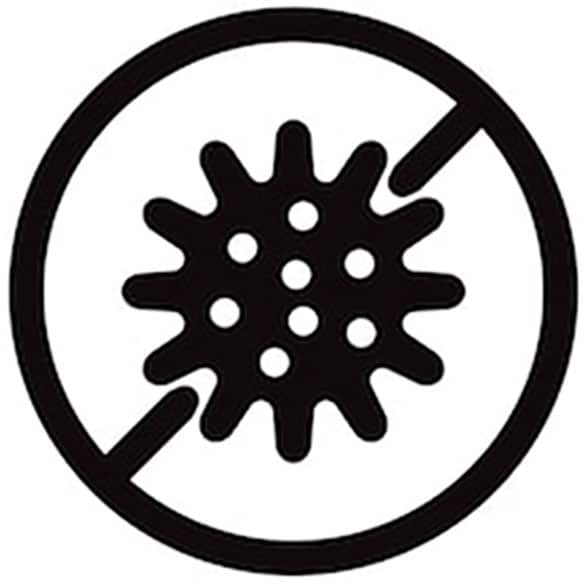CEILINGS AND UNDERFLOORS PROJECT GUIDE
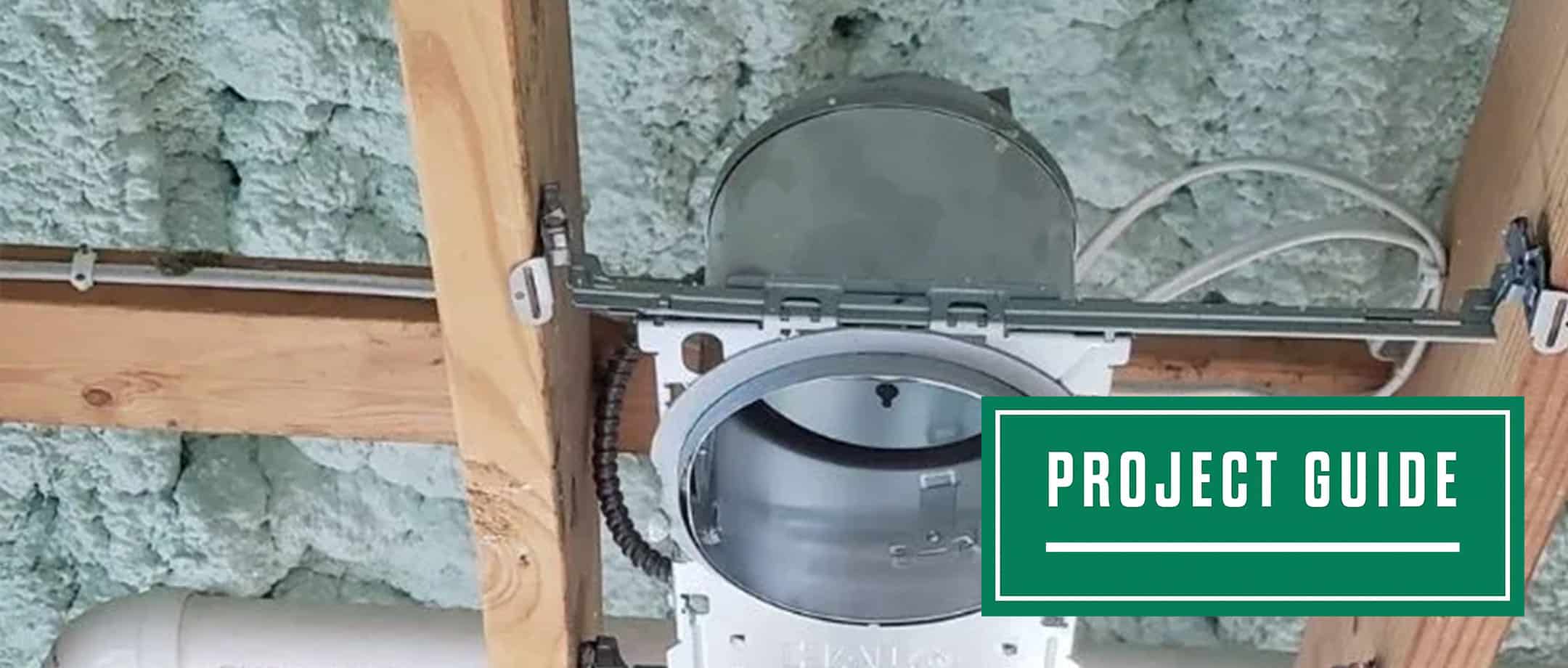

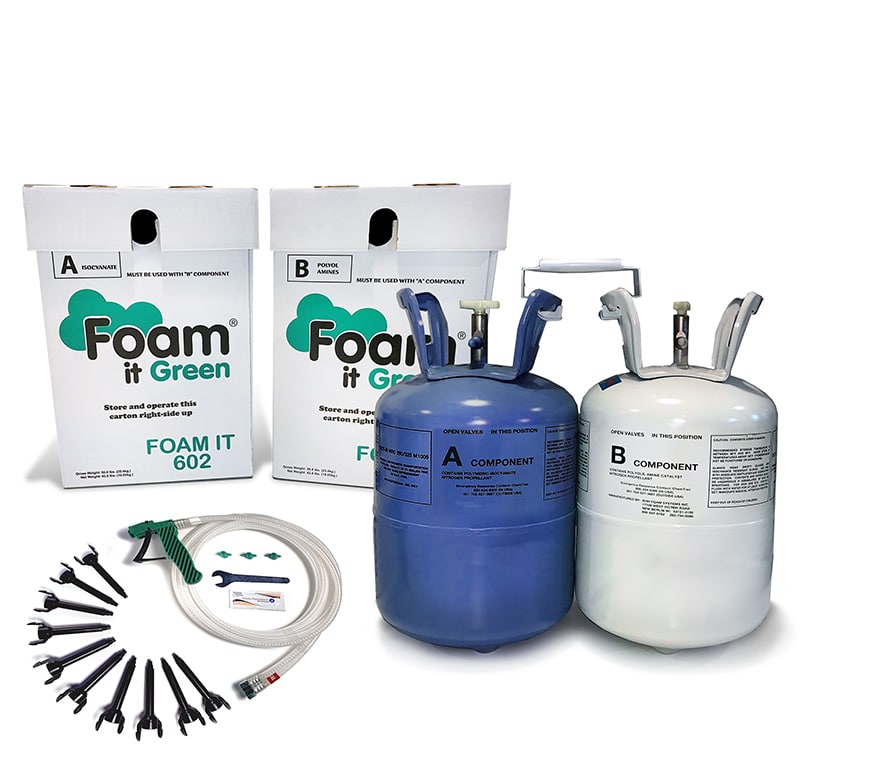
DETERMINE YOUR GOALS
The first step in any successful project is making sure you know what you are setting out to accomplish. When spraying the underside of a floor or ceiling, consider why you are insulating and what from. If you are simply trying to deaden sound transfer, a 2” pass of open cell foam is usually the best way to go. If you are just stopping drafts or pests, then an inch of closed cell foam is perfect. For higher R value and insulating power, additional layers of closed cell foam will provide another approx. R7 per inch. 3” of closed cell foam is usually the maximum thickness we’d recommend for amazing results.
DO THE MATH
Your total required number of spray foam kits is determined by your total board feet need. A board-foot is one squared foot at one inch thick. Measure the length and width of your floor or ceiling, and multiply those two numbers to determine the surface area square footage. From there, multiply that number by the number of inches thick you would like to spray, which will give you your total board feet. When you are spraying the underside of a floor or ceiling, you are pointing the gun and nozzle upwards, which means gravity will pull down some foam particles as you go. Because of this, we recommend building in a bit more waste for these types of projects. Divide your total board-feet need by 600 (the board-feet a Foam it Green 602 kit can cover), round it up to the next whole kit, and place your order!
PREPARE FOR SUCCESS
It’s difficult if not impossible to get foam off of surfaces it hits. So, be sure to take the time to cover anything you do not want foam stuck to including floors, windows, equipment in the area, and even you once you start spraying! Along with the recommended PPE, the sprayer should have no exposed skin or hair during application. How do you get foam out of a beard? In a word, scissors. In a tight area, under a floor, it may be more difficult to reposition, causing you to stop spraying more often. We do offer additional nozzles for purchase, as they will clog if you stop the flow of foam for 30 seconds. As always, make sure your target spray surfaces measure between 65F-85F.
TECHNIQUE TIPS
Target a wet foam application thickness of 1/3” as that will expand to one inch cured. When spraying overhead, it’s recommended to leave off the fan spray tip and simply use the mixing nozzle alone. Get your hand a bit closer when pointing up, and use a lighter trigger pull so you don’t “bounce” the foam off the surface.
SPECIAL NOTES ABOUT CEILINGS AND UNDERFLOORS
For upward directional spraying, you have more waste because the foam is fighting gravity. So again, don’t use the green fan spray tips and do use a lighter touch on the trigger so that the foam does not bounce off the surface. We recommend building in a bit more waste than normal when spraying overhead.
If you are sound deadening between floors, adding a layer of rock wool insulation over the foam that you have applied can help you achieve even better results. This is a great one-two punch for stopping different frequencies of sound and vibrations.
When insulating the underside of a floor in a crawlspace or basement, be sure to also seal up the rim joist bays and sill plates. These areas where the structure sits on top of the foundation are notorious for air leaks and other penetrations that can invite rodents and insects.
For projects where it is difficult to move and reposition, make sure you are set up well before spraying. Pulling the hoses to move a tank can cause it to break, and tipping a tank during spray can cause a quick loss of pressure.
Recommended product for ceiling and underfloor projects

Foam it Green® STANDARD
Closed Cell Spray Foam
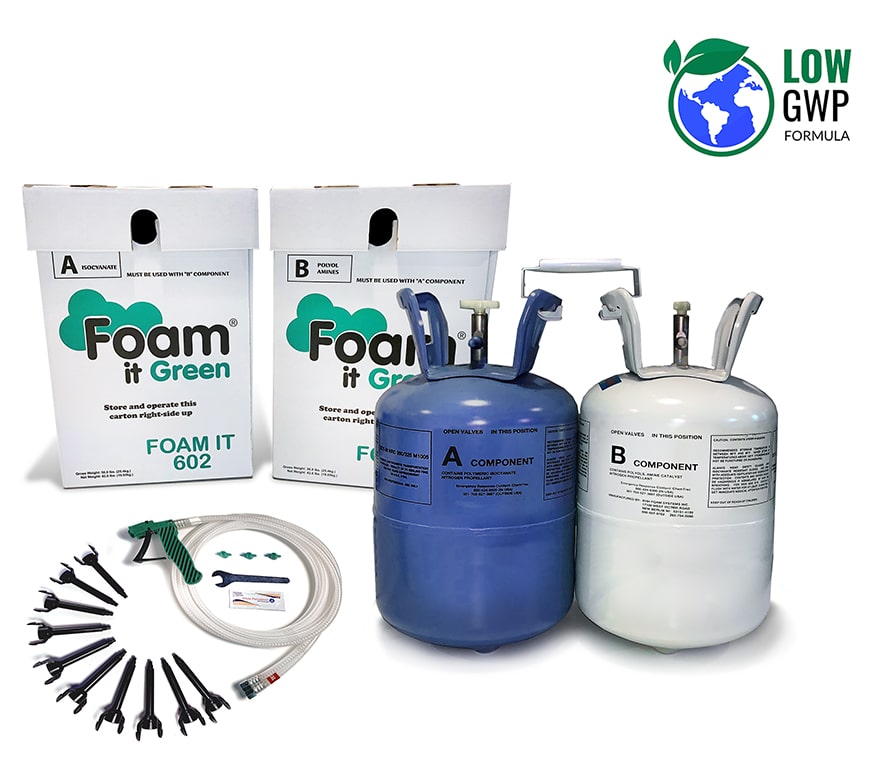
Foam it Green® STANDARD LGWP
Closed Cell Spray Foam
Foam it Green® Low-GWP formula can be shipped to all states, including CA, CO, HI, MA, MD, NJ, NY, RI, WA, VT.

Green Means Go
We have green indicator foam. Yellow-plus-blue-equals-green foam to be specific. That way you know you have the right mix the whole way through your project, minimizing waste. Green means go!
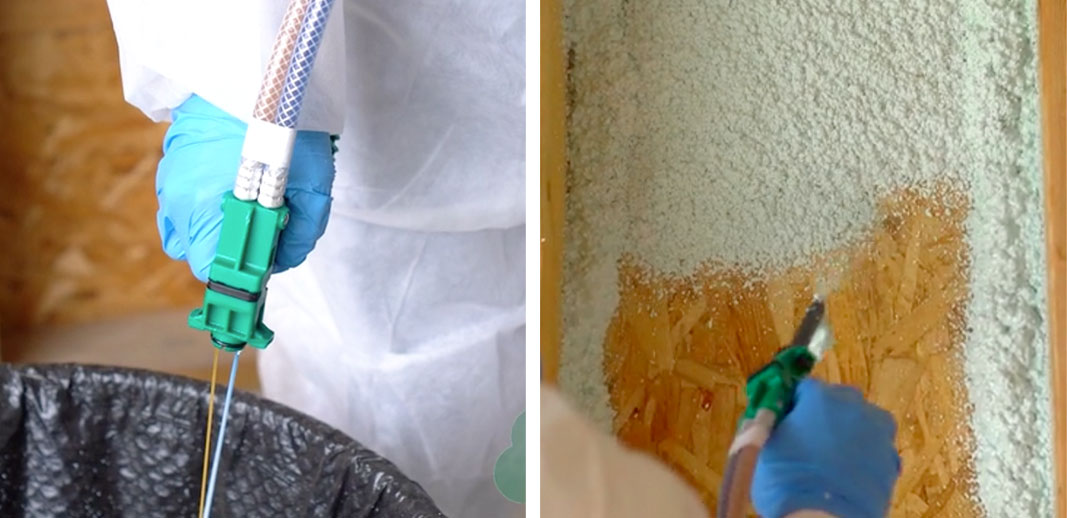
Better Gun Means Better Results
We have the best gun in the business. The face of the gun has been designed to have two, solid ear clips so the nozzles won’t fly off during spray. Many competitor guns have just a single clip at the top. All of Foam it Green’s guns are pressure tested before shipping out.
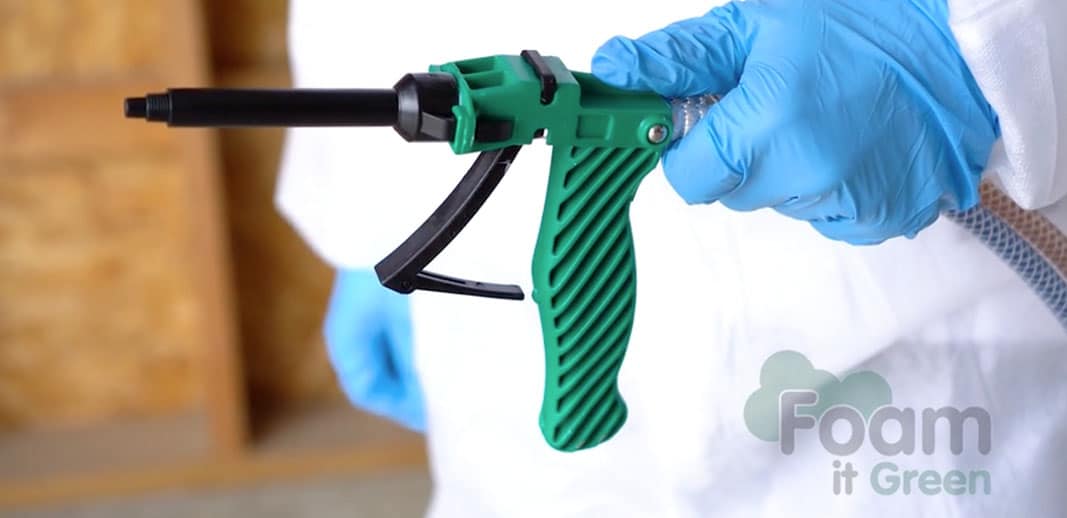
The Perfect Temperature
We have temperature strips on the tanks to help you know the kit is up to temp and ready to be sprayed. Improper tank temperature is the #1 cause of off-ratio spraying.
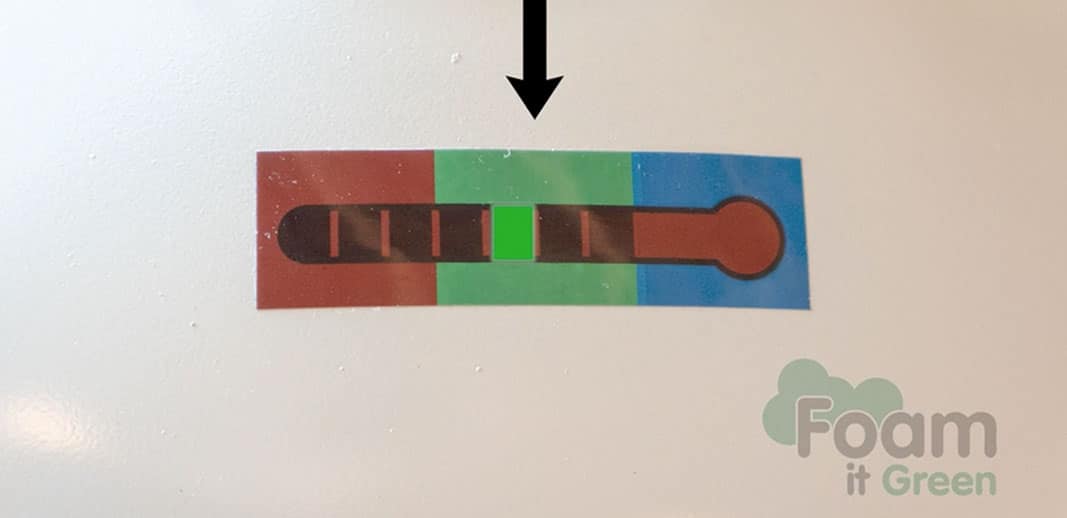
Keep The Foam Flowing
You get a full 10 mixing nozzles with each Foam it Green 602. You may have extra, and that’s ok! It’s a lot better than running short and shutting down the project to wait for more.
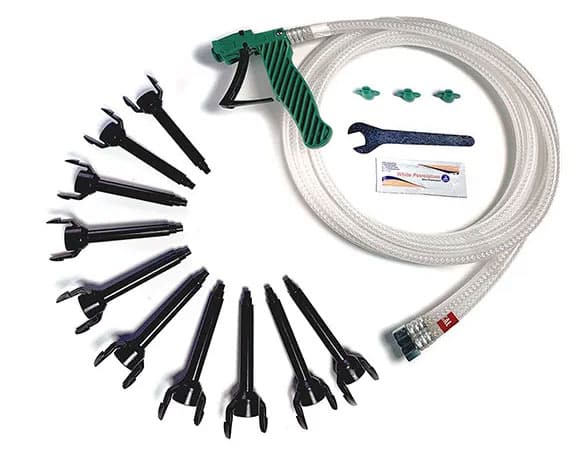
Fire Retardant
Our fast rise, closed cell foam is ASTM E84 Class 1 fire retardant insulation, standard. We don’t offer a cheaper version of the foam that isn’t Class 1 because we don’t want people accidentally buying potentially less-safe.
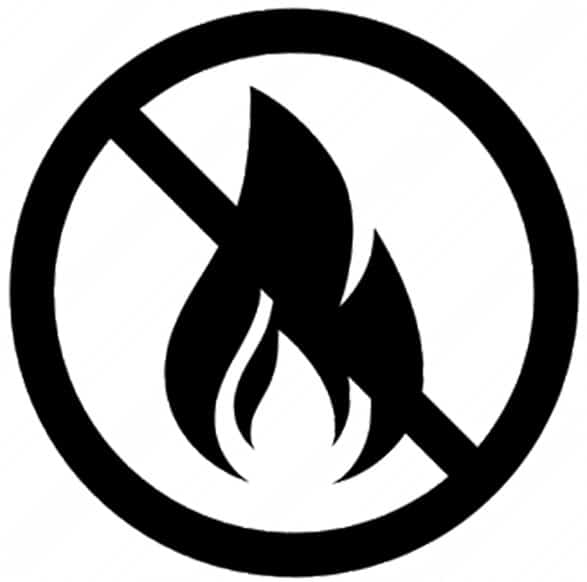
Anti-Microbial
Our fast rise, closed cell foam is ASTM G21 Anti-Microbial, adding mold stopping power to your project.
